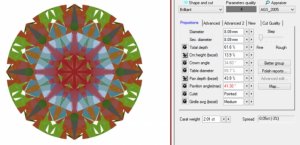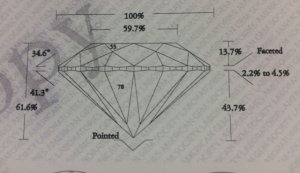Hello! I am new here. I have done much research through these theads and have grown to have a huge appreciation of the community here and I wanted to be a part of it. I am on a diamond hunt and I have a question about a diamond. It is an AGS Ideal cut, graded in January 2016. But it seems off, am I missing something? Is this really an ideal cut diamond? Would it be a good performer or have lots of light leak?
2.01 ctw
Depth 61.6
Table 59.7
Crown angle 34.6 / 13.7%
Pavilion angle 41.3 / 43.7%
Pointed culet
When I plug it into the HCA tool I get a score of 4.6 good. I'm not sure what isn't adding up as I thought AGS Ideal cut diamonds were pretty reliably ideal.
I'd appreciate any thoughts on this, thank you!
2.01 ctw
Depth 61.6
Table 59.7
Crown angle 34.6 / 13.7%
Pavilion angle 41.3 / 43.7%
Pointed culet
When I plug it into the HCA tool I get a score of 4.6 good. I'm not sure what isn't adding up as I thought AGS Ideal cut diamonds were pretty reliably ideal.
I'd appreciate any thoughts on this, thank you!










300x240.png)